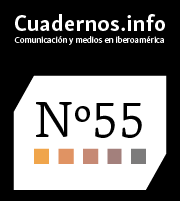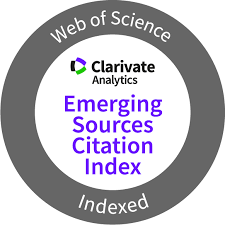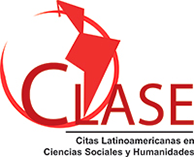Determinantes organizacionales de la diferencia de género en la cobertura periodística de campañas electorales
DOI:
https://doi.org/10.7764/cdi.55.52309Palabras clave:
medios de comunicación, análisis de contenido, mujer, discriminación de género, socialización, cobertura periodisticaResumen
Este estudio examina la persistencia de las brechas de género en la representación mediática de las mujeres en un entorno con leyes de paridad de género, mediante la indagación del rol de los factores organizacionales asociados con tres modelos explicativos de las diferencias de género en la cobertura informativa de candidatas: (1) el modelo de oferta, el de (2) género y el de (3) socialización laboral. Se realizaron pruebas de independencia a datos de monitoreo de 52 programas de radio y televisión en México para identificar los factores que contribuyeron a menores brechas de género en la cobertura informativa de las campañas electorales de 2021. Se encontraron menores brechas de género en la cobertura informativa de los programas producidos por medios con menor alcance geográfico, régimen de propiedad pública y dirigidos por mujeres. Los resultados respaldan las explicaciones para las brechas de género en la cobertura informativa proporcionadas por los modelos de oferta y de socialización laboral.
Descargas
Citas
Álvarez-Monsiváis, E. (2020). De primera dama a candidata presidencial: masculinización en la cobertura periodística de mujeres políticas (From First Lady to presidential candidate: masculinization in news coverage of female politicians). Cuadernos.Info, (47), 26-52. https://doi.org/10.7764/cdi.47.1868
Archenti, N. & Tula, M. I. (2017). Critical Challenges of Quotas and Parity in Latin America. In T. Došek, F. Freidenberg, M. Caminotti, M., & B. Muñoz-Pogossian (Eds.), Women, Politics, and Democracy in Latin America. Crossing Boundaries of Gender and Politics in the Global South. Palgrave Macmillan. https://doi.org/10.1057/978-1-349-95009-6_3
Armstrong, C. L. (2004). The Influence of Reporter Gender on Source Selection in Newspaper Stories. Journalism & Mass Communication Quarterly, 81(1), 139-154. https://doi.org/10.1177%2F107769900408100110
Baitinger, G. (2015). Meet The Press or Meet the Men? Examining Women’s Presence in American News Media. Political Research Quarterly, 68(3), 579-592. https://doi.org/10.1177%2F1065912915586632
Childs, S. & Krook, M. L. (2008). Critical Mass Theory and Women’s Political Representation. Political Studies, 56(3), 725-736. https://doi.org/10.1111/j.1467-9248.2007.00712.x
Craft, S. & Wanta, W. (2004). Women in the Newsroom: Influences of Female Editors and Reporters on the News Agenda. Journalism & Mass Communication Quarterly, 81(1), 124-138. https://doi.org/10.1177%2F107769900408100109
Delacre, M., Lakens, D., & Leys, C. (2017). Why psychologists should by default use Welch’s t-test instead of Student’s t-test. International Review of Social Psychology, 30(1), 92–101. http://doi.org/10.5334/irsp.82
De Swert, K. & Hooghe, M. (2010). When Do Women Get a Voice? Explaining The Presence of Female News Sources in Belgian News Broadcasts (2003—5). European Journal of Communication, 25(1), 69-84. https://doi.org/10.1177%2F0267323109354229
D’Heer, J., Vergotte, J., De Vuyst, S., & Van Leuven, S. (2020). The bits and bytes of gender bias in online news: a quantitative content analysis of the representation of women in Vice. com. Feminist Media Studies, 20(2), 256-272. https://doi.org/10.1080/14680777.2019.1574858
Eckert, S. & Assmann, K. (2021). The “ProQuote” initiative: women journalists in Germany push to revolutionize newsroom leadership. Feminist Media Studies, 20(2), 256-272. https://doi.org/10.1080/14680777.2021.1881984
Eddy, K., Selva, M., & Nielsen, R. K. (2022, March 8). Women and Leadership in the News Media 2022: Evidence from 12 Markets. Reuters Institute. https://reutersinstitute.politics. ox.ac.uk/women-and-leadership-news-media-2022-evidence-12-markets
Hanitzsch, T. & Hanusch, F. (2012). Does gender determine journalists’ professional views? A reassessment based on cross-national evidence. European Journal of Communication, 27(3), 257-277. https://doi.org/10.1177%2F0267323112454804
Hudson-Frías, E., Porath, W., & Ortega-Gunckel, C. (2022). Periodismo, fuentes políticas y género en Chile. Una relación desproporcionada (Journalism, political sources, and gender in Chile. A disproportionate relationship). Cuadernos.Info, (52), 204-225. https://doi.org/10.7764/cdi.52.37535
Inter-Parliamentary Union. (2022). Monthly ranking of women in national parliaments. https://data.ipu.org/women-ranking
Lavie, A. & Lehman-Wilzig, S. (2005). The method is the message: Explaining inconsistent findings in gender and news production research. Journalism, 6(1), 66-89. https://doi.org/10.1177%2F1464884905048953
Macharia, S. (Ed.). (2020). Who makes the news. 6th Global Media Monitoring Project. GMMP. https://whomakesthenews.org/gmmp-2020-final-reports/
Mitchelstein, E., Andelsman, V., & Boczkowski, P. J. (2019). Joanne Public vs. Joe Public: News Sourcing and Gender Imbalance on Argentine Digital Media. Digital Journalism, 7(10), 1311-1327. https://doi.org/10.1080/21670811.2019.1680301
Organista, N. & Mazur, Z. (2020). “You either stop reacting or you don’t survive. There’s no other way”: the work experiences of Polish women sports journalists. Feminist Media Studies, 20(8), 1110-1127. https://doi.org/10.1080/14680777.2019.1690020
Piscopo, J. M. (2015). States as Gender Equality Activists: The Evolution Of Quota Laws in Latin America. Latin American Politics and Society, 57(3), 27-49. https://doi.org/10.1111/j.1548-2456.2015.00278.x
Rangel Juárez, G. B., Martínez Moscoso, D. M., & Rosas Palacios, M. (2020). Más allá de la paridad. Elecciones 2018 en Jalisco. Universidad de Guadalajara.
Reskin, B. (1993). Sex Segregation in the Workplace. Annual Review of Sociology, 19, 241-270. https://doi.org/10.1146/annurev.so.19.080193.001325
Rodelo, F. V. (2016). Disparidades de género en la cobertura mediática de campañas electorales locales en México (Gender disparities in the media coverage of local electoral campaigns in Mexico). Cuadernos.Info, (39), 87-99. https://doi.org/10.7764/cdi.39.965
Rodelo, F. V. (2020). Antecedents of strategic game and issue framing of local electoral campaigns in the Mexican context. Comunicación y Sociedad, 1-28. https://doi.org/10.32870/cys.v2020.7643
Rodgers, S. & Thorson, E. (2003). A Socialization Perspective on Male and Female Reporting. Journal of Communication, 53(4), 658-675. https://doi.org/10.1111/j.1460-2466.2003.tb02916.x
Ross, K., Boyle, K., Carter, C., & Ging, D. (2018). Women, Men and News: It’s life, Jim, but not as we know it. Journalism Studies, 19(6), 824-845. https://doi.org/10.1080/1461670X.2016.1222884
Shor, E., Van De Rijt, A., Miltsov, A., Kulkarni, V., & Skiena, S. (2015). A Paper Ceiling: Explaining the Persistent Underrepresentation of Women in Printed News. American Sociological Review, 80(5), 960-984. https://doi.org/10.1177%2F0003122415596999
Shor, E., Van de Rijt, A., & Miltsov, A. (2019). Do Women in the Newsroom Make a Difference? Coverage Sentiment toward Women and Men as a Function of Newsroom Composition. Sex Roles, 81, 44-58. https://doi.org/10.1007/s11199-018-0975-8
Sjøvaag, H. & Pedersen, T. A. (2019). Female Voices in the News: Structural Conditions of Gender Representations in Norwegian Newspapers. Journalism & Mass Communication Quarterly, 96(1), 215-238. https://doi.org/10.1177%2F1077699018789885
Steiner, L. (2012). Failed Theories: Explaining Gender Difference in Journalism. Review of Communication, 12(3), 201-223. https://doi.org/10.1080/15358593.2012.666559
Universidad de Guadalajara. (2015). Monitoreo de la cobertura informativa de radio y televisión en las elecciones estatales de 2015. Informe final. Instituto Electoral y de Participación Ciudadana. https://www.iepcjalisco.org.mx/proceso-electoral-2015/monitoreo-sobrecampanas-electorales
Universidad de Guadalajara. (2018). Monitoreo de radio y televisión. Proceso electoral concurrente 2017-2018 de Jalisco. Informe final. Instituto Electoral y de Participación Ciudadana. https://www.iepcjalisco.org.mx/proceso-electoral-2018/monitoreo%20%20%20
Universidad de Guadalajara. (2021). Monitoreo de radio y televisión del proceso electoral concurrente 2020-2021 de Jalisco. Instituto Electoral y de Participación Ciudadana https://www2.iepcjalisco.org.mx/proceso-electoral-2021/?page_id=20
Valenzuela, S. & Correa, T. (2009). Press Coverage and Public Opinion on Women Candidates: The Case Of Chile’s Michelle Bachelet. International Communication Gazette, 71(3), 203-223. https://doi.org/10.1177%2F1748048508100913
Vidal-Correa, F. (2020). Media coverage of women in politics: Mexican local politicians on campaign. The Journal of International Communication, 26(1), 1-19. https://doi.org/10.1080/13216597.2020.1736599
Vos, D. (2013). The vertical glass ceiling: Explaining female politicians’ underrepresentation in television news. Communications, 38(4), 389-410. https://doi.org/10.1515/commun-2013-0023
Descargas
Publicado
Cómo citar
Número
Sección
Licencia
Derechos de autor 2023 Cuadernos.info

Esta obra está bajo una licencia internacional Creative Commons Atribución-CompartirIgual 4.0.















